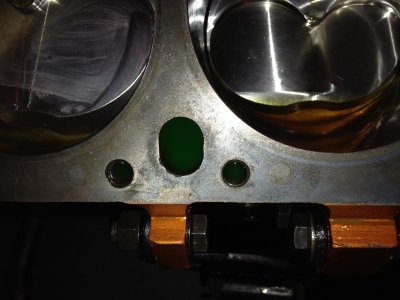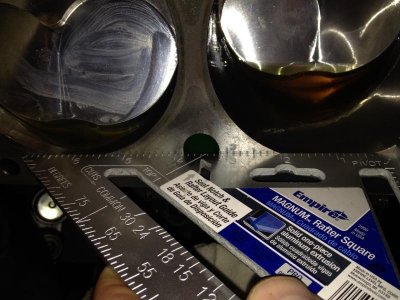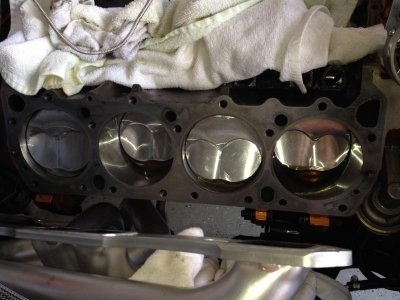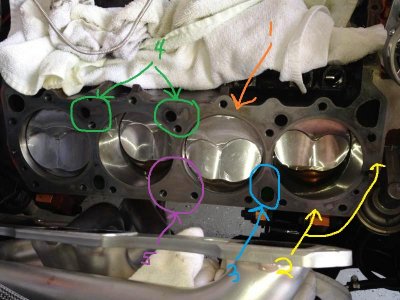bth0320
Well-Known Member
Hi folks,
Wondering if anyone has had a similar issue....finally fired up my 383 after a fresh build. I bought the car with the short block already complete so not sure what machine work was done but looks to be professional. Upon firing up, it ran great but hadn't set the idle yet. It died and when trying to restart, it was hydro-locked.....quickly found the problem to be coolant was filling up cylinder #4 and of course the whole motor at this point.....literally had coolant pouring out of the end of the header. Put a new gasket on and same thing. After getting a camera, we were pressurizing the coolant system and with only 5 to 10 psi, we could see coolant seeping in around the gasket. Swapped the Eddy heads to be sure it wasn't the head and same thing so we did rule that out. Took a straight edge to the deck of the block and it looks to be dead straight....no visible cracks in the cylinder or anywhere near.....super frustrating.
I am using a fel pro 2519 PTI gasket (.040 thickness). Could it be just the gasket? I have a multi-layer gasket on order at $110 a gasket just to be sure but wondering if anyone else has had similar issues before I tear the motor apart and take the block to a machine shop?
Here is a short video on the start up....was super pumped at first how good she sounded.
[video=youtube;sy-xEUiwSrg]http://www.youtube.com/watch?v=sy-xEUiwSrg&feature=youtu.be[/video]
Thanks for your help!
Brian
Wondering if anyone has had a similar issue....finally fired up my 383 after a fresh build. I bought the car with the short block already complete so not sure what machine work was done but looks to be professional. Upon firing up, it ran great but hadn't set the idle yet. It died and when trying to restart, it was hydro-locked.....quickly found the problem to be coolant was filling up cylinder #4 and of course the whole motor at this point.....literally had coolant pouring out of the end of the header. Put a new gasket on and same thing. After getting a camera, we were pressurizing the coolant system and with only 5 to 10 psi, we could see coolant seeping in around the gasket. Swapped the Eddy heads to be sure it wasn't the head and same thing so we did rule that out. Took a straight edge to the deck of the block and it looks to be dead straight....no visible cracks in the cylinder or anywhere near.....super frustrating.
I am using a fel pro 2519 PTI gasket (.040 thickness). Could it be just the gasket? I have a multi-layer gasket on order at $110 a gasket just to be sure but wondering if anyone else has had similar issues before I tear the motor apart and take the block to a machine shop?
Here is a short video on the start up....was super pumped at first how good she sounded.
[video=youtube;sy-xEUiwSrg]http://www.youtube.com/watch?v=sy-xEUiwSrg&feature=youtu.be[/video]
Thanks for your help!
Brian




















